I am trying to use an LM2596-adjustable to make an inverting Buck-Boost power supply as per below:

The circuit requires a voltage divider that is used to adjust the output voltage. In the diagram, the resistors R4 and R3 somehow adjust the output.
In my application I have not used C1 or R2; the ON/OFF pin is just connected to the output.
If I do not connect any resisters, just connect the feedback pin to ground, I get -1.23v output, as expected.
My question is what values to use for R3 and R4 to get -5v output.
Thanks for any ideas. Bob